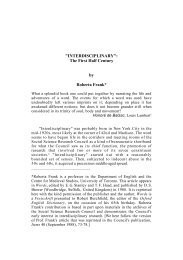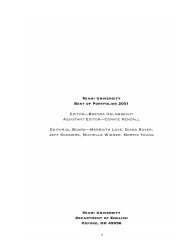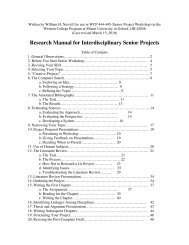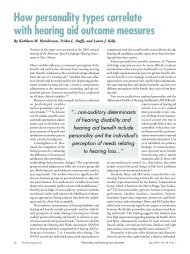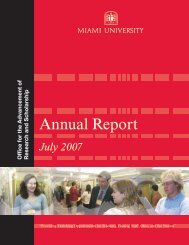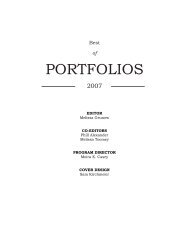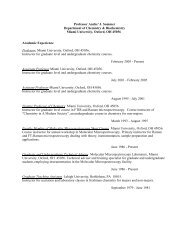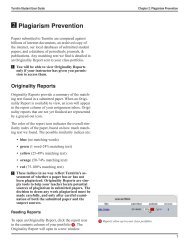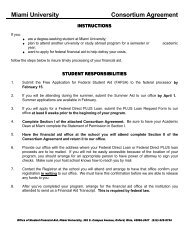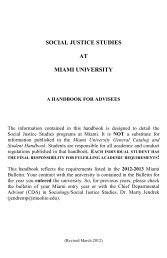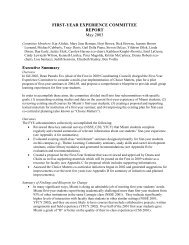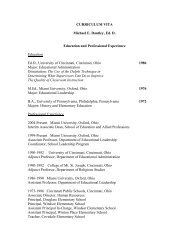The Steppes: Crucible of Eurasia - units.muohio.edu - Miami University
The Steppes: Crucible of Eurasia - units.muohio.edu - Miami University
The Steppes: Crucible of Eurasia - units.muohio.edu - Miami University
Create successful ePaper yourself
Turn your PDF publications into a flip-book with our unique Google optimized e-Paper software.
Robert S. Wicks, <strong>Miami</strong> <strong>University</strong> Art Museum and Department <strong>of</strong> Art (wicksrs@<strong>muohio</strong>.<strong>edu</strong>)<br />
Bird-Headed Antler Tines: Stability and Change in Ancient <strong>Eurasia</strong>n Art"<br />
Although the original meanings ascribed to the bird-headed antler tine motif remain<br />
incompletely understood today, the transmission <strong>of</strong> such a distinctive visual sign over some<br />
4,000 miles <strong>of</strong> sparsely inhabited grasslands among non-literate populations together with its<br />
survival for a period <strong>of</strong> more than four centuries underscore the vitality and innate power <strong>of</strong> its<br />
symbolism. As an art historian I am particularly interested in determining the typological<br />
groupings <strong>of</strong> the material in order to gain a better understanding <strong>of</strong> the motif’s possible origins,<br />
thematic development, and, ultimately, meanings. This paper was inspired by the work <strong>of</strong><br />
Pr<strong>of</strong>essor Esther Jacobson and is given in her honor.<br />
My presentation begins with an examination <strong>of</strong> the major morphological characteristics<br />
<strong>of</strong> the bird-headed antler tine motif and its geographical and temporal horizons within the visual<br />
art traditions <strong>of</strong> <strong>Eurasia</strong> during the second half <strong>of</strong> the first millennium B.C.E. Doubtless inspired<br />
by large birds <strong>of</strong> prey, such as the eagle with its hook-like beak, the bird-headed antler tine motif<br />
displays considerable regional variation. In Scythian art, for example, the cere, the waxy area<br />
around the opening <strong>of</strong> the nostrils, takes on the appearance <strong>of</strong> a duck's bill accompanied by a<br />
dramatic coiling <strong>of</strong> the upper beak. In its easternmost development, among the Xiongnu and<br />
Eastern Han, the bird acquires, in addition to leaf-like ears, a shovel-shaped beak structure<br />
similar to that <strong>of</strong> a flamingo.<br />
<strong>The</strong> main part <strong>of</strong> my presentation introduces an analytical strategy for examining the<br />
typological development <strong>of</strong> the bird-headed antler tine motif in isolated and narrative<br />
representations utilizing Esther Jacobson’s predation/transformation terminology for Scytho-<br />
Siberian art. While these observations and groupings do not necessarily explain the meaning<br />
behind a particular element or motif, they are valuable for pointing out unexpected patterns and<br />
relationships.<br />
13



